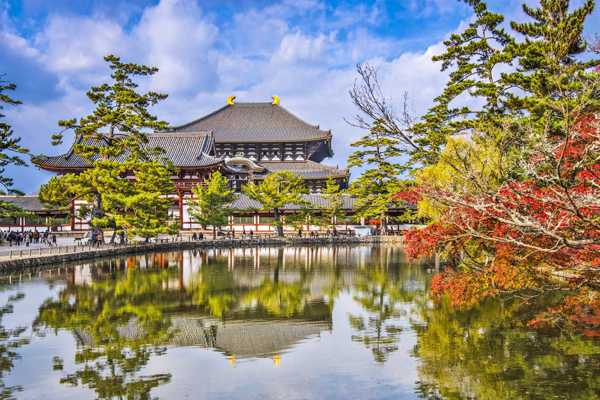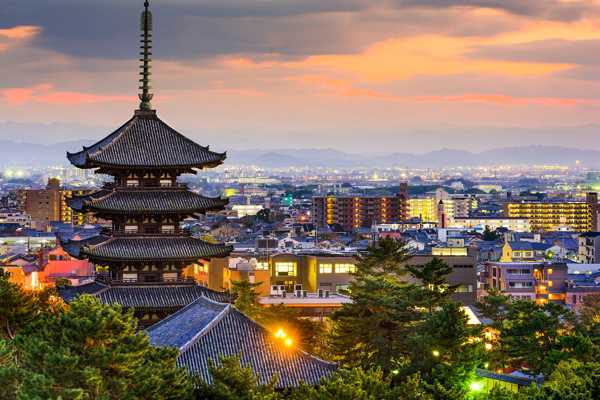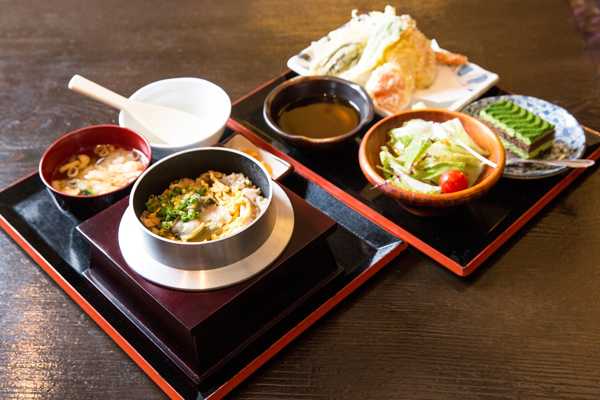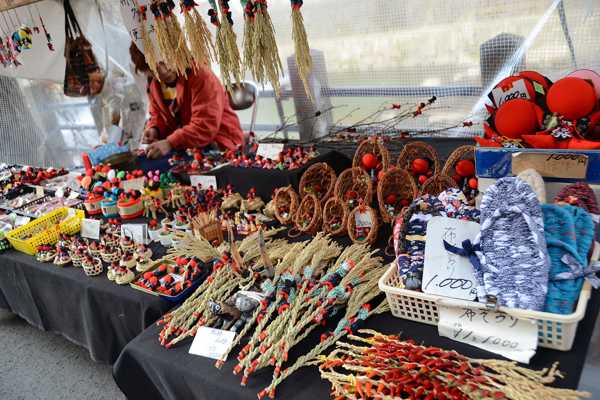Horyuji Temple is one of the most significant Buddhist shrines in Japan. You can find it in Ikaruga, about 10 km from Nara in the north-western Nara prefecture. Also known as Ikaruga-dera Temple, Horyuji Temple literally means the ‘Temple of the Flourishing Law,’ as the temple complex once served as both a seminary and a monastery.
Besides being one of the 7 great temples of Nanto (Nara prefecture) and the seat of the Shotoku sect of Buddhism, Horyuji Temple is credited as the first UNESCO World Heritage site in Japan.
Horyuji Temple (Ikaruga-dera Temple) - one of the highlights of 13 Best Things to Do in Nara and 11 Best Things to Do in Japan (Read all about Nara here)
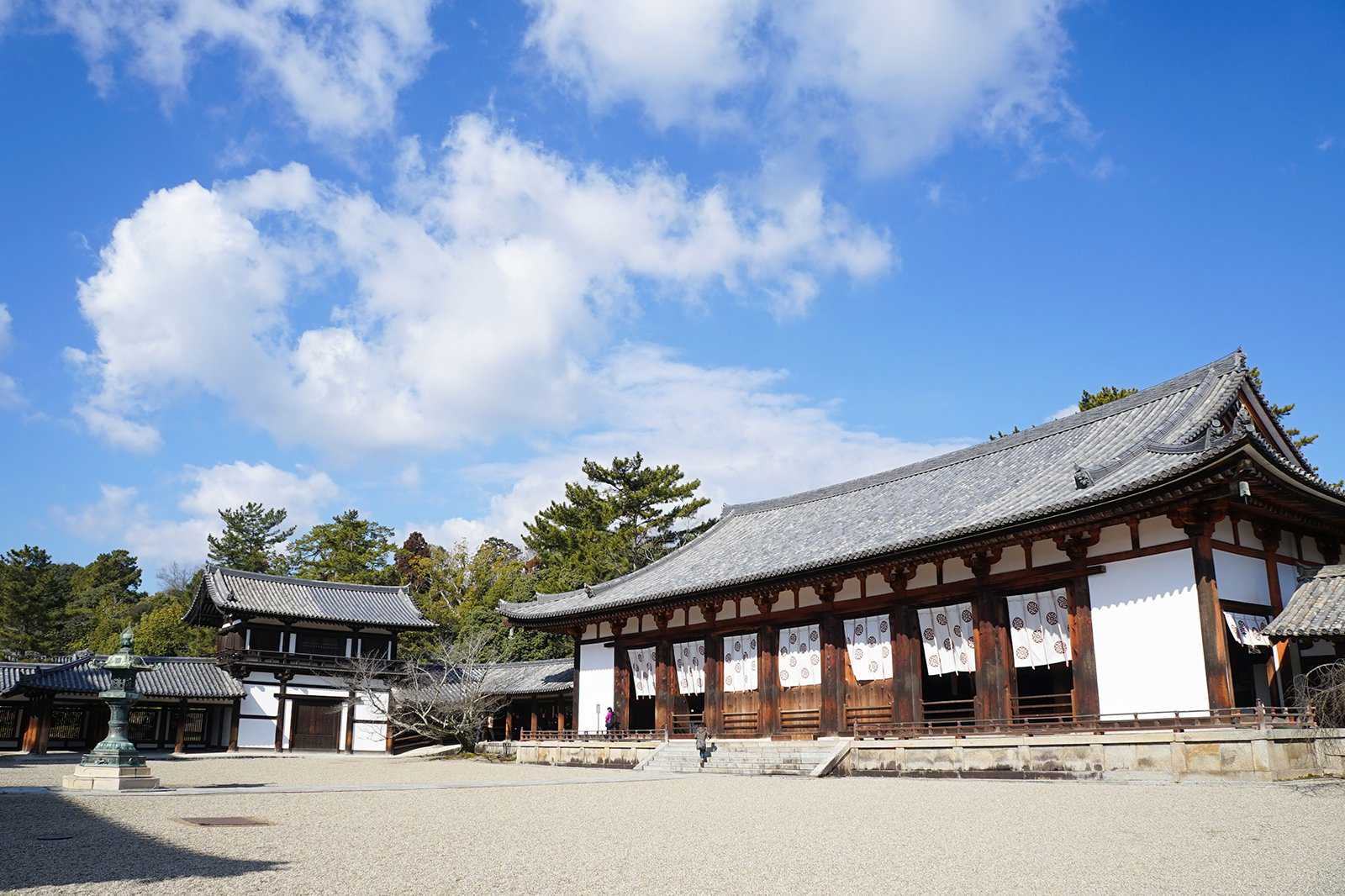
History of Horyuji Temple
An engraving that chronicles the history of the temple can be found on the rear of the Buddha statue in the temple’s main hall. The engravings recall Horyuji temple being erected in 607 by the then Prince Shotoku to fulfil his father’s last wish for a Buddhist temple to be constructed in honour of the Medicine Buddha. It was destroyed by fire in 670 and was reconstructed at the present site of Western Precinct and was completed in 711.
The temple further underwent renovations during the 16th and 17th centuries under the benefaction of the Toyotomi and the Tokugawa Shogunate. Later during the early years of the 20th century, the government took serious steps to renovate the temple.
As an outcome of these constant efforts, Horyuji temple holds the distinction of boasting of some of the oldest wooden structures in the world, with a history that dates back to more than 1,300 years ago. The temple is now one of the country’s prominent religious centres and is hailed as the temple of Prince Shotoku, the apostle of Buddhism in Japan.
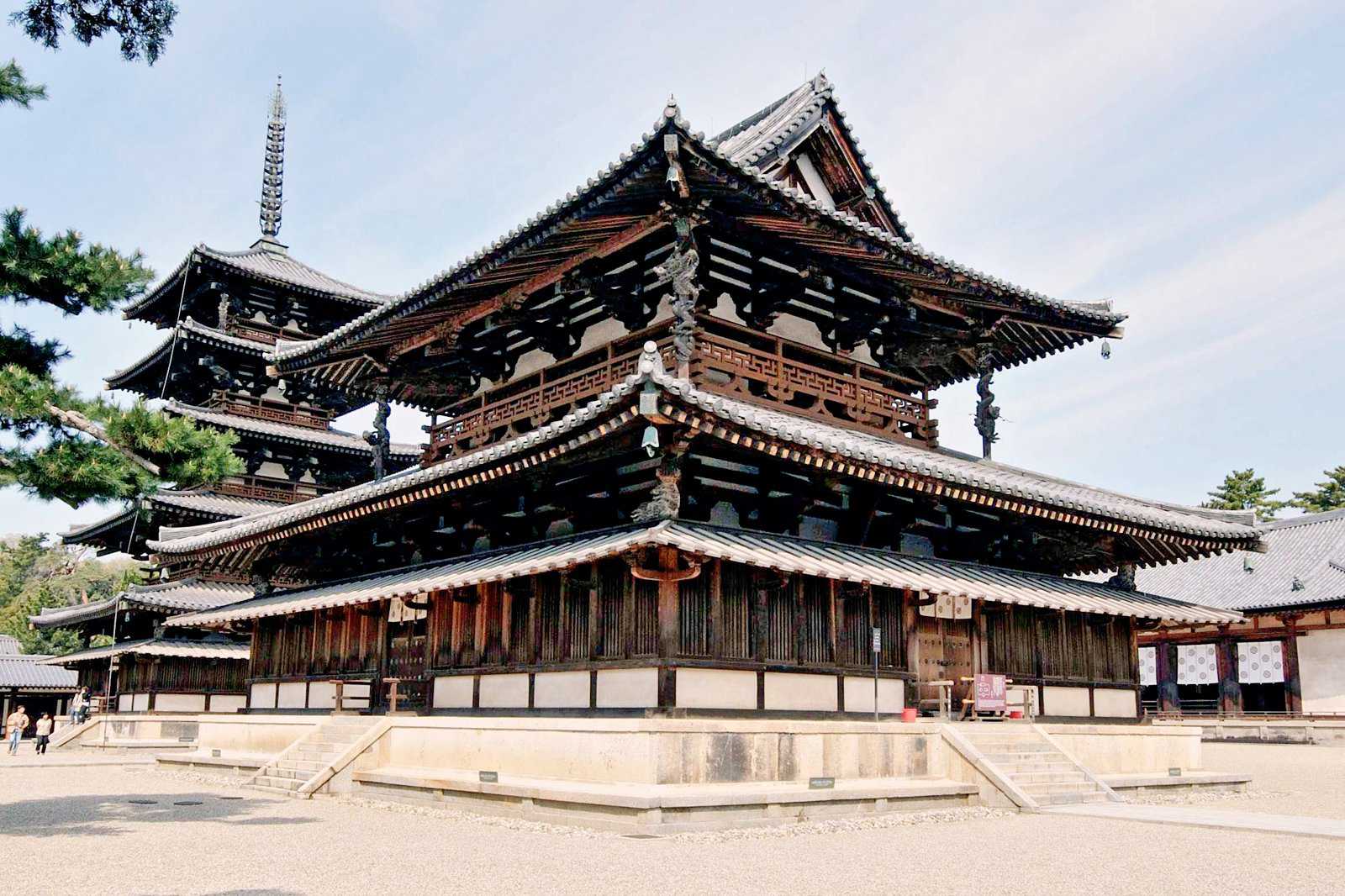
ภาพโดย Reggaeman (CC BY-SA 3.0) เวอร์ชั่นแก้ไข
Highlights and Features of Horyuji Temple
There’s a surprising number of artefacts, rituals, and ceremonies displayed at Horyuji temple. In fact, the temple is a treasure trove of ancient Buddhist art, with more than 2,000 articles and structures of cultural and historical significance. About 200 of them have been declared as Important Cultural Properties.
A beautiful pathway flanked on both sides by refreshing pine trees leads you to the temple’s first gate – Nandaimon, literally ‘Great South Gate.’ There are also many other gates within the temple, such as Chumon or Middle Gate that enables you to enter the inner sanctum of the Western Temple and Todaimon or East Great Gate that once served as the temple’s entrance and now stands as a mark to segregate the east and west sections of the temple complex.
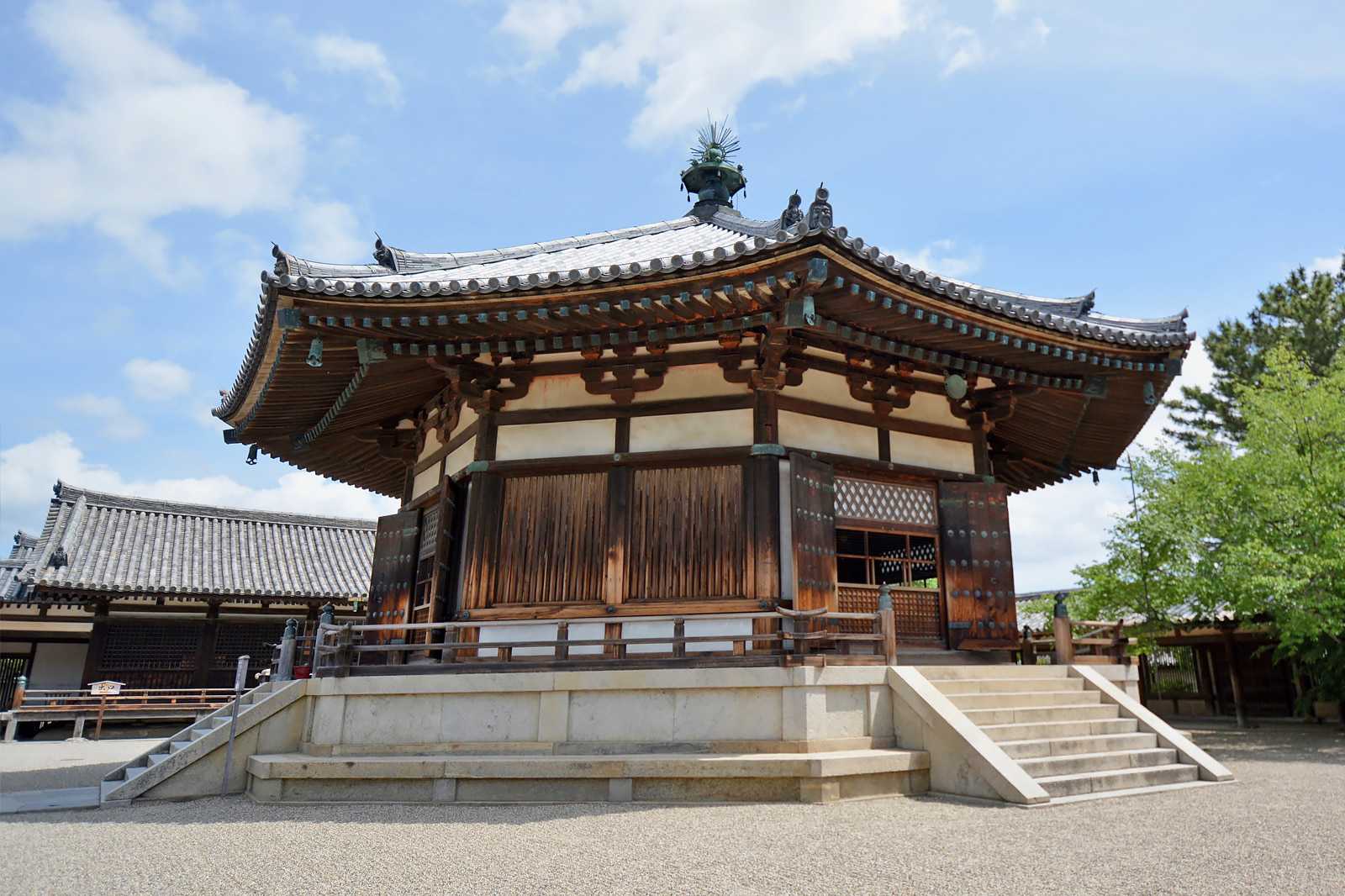
The temple ground consists of two sections: Western Temple (Sai-in or Nishi-no-in) and Eastern Temple (To-in or Higashi-no-in). Among the 30 or so buildings in the Western temple that deserve a special note are Kondo – a squat Asuka-era structure that features some amazing frescoes and statues, Gojuto – a 5-storied pagoda that is the oldest of its kind in the country, Daikodo or the Great Lecture Hall that traces back to the Heian era, and Daihozode which exhibits a wide assortment of wealth collected over a millennium.
The Eastern Temple has a main building, Yumedono, constructed on the site where Prince Shotoku once lived and meditated, in addition to 13 other buildings.
Formerly the palace of Prince Shotoku’s mother, Chuguji Temple is also within the complex and is now home to nuns of a Buddhist sect. A stone monument that has been constructed to memorialize the temple’s declaration as a UNESCO World Heritage Site in 1993 can also be seen within the complex. Apart from these, there are several remarkable images sculpted across the structures as well as gates of the temple – the prominent being the images of Nioh on either sides of the gate and the ascending and descending dragons on the posts of the temple’s structure. The best way to reach the temple is to take a bus or train from Nara, about 10 km away.
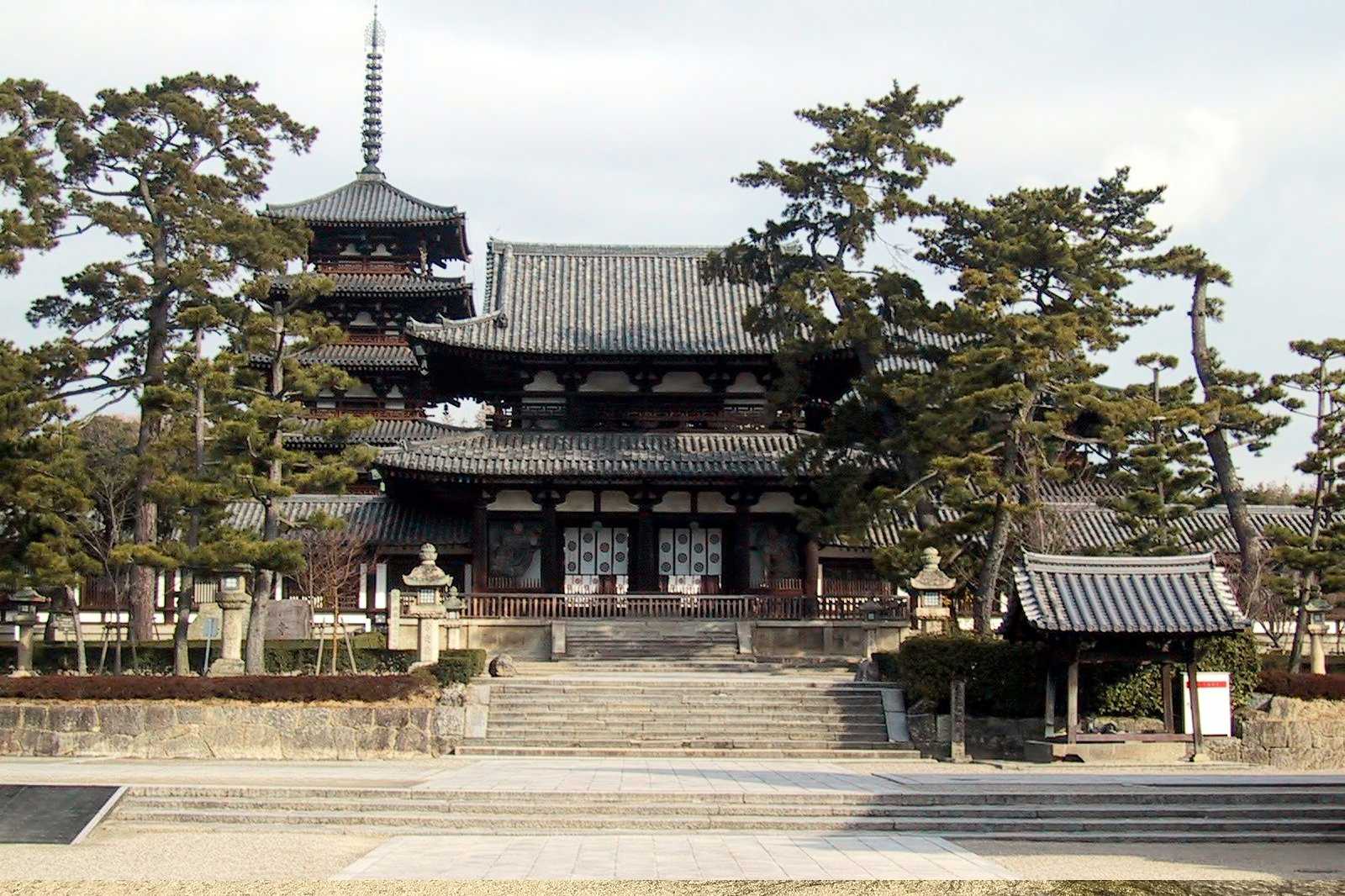
ภาพโดย Chris 73 (CC BY-SA 3.0) เวอร์ชั่นแก้ไข
Horyuji Temple (Ikaruga-dera Temple)
ที่ตั้ง: 1-1 Horyuji Sannai, Ikaruga, Ikoma District, Nara Prefecture 636-0115, Japan
เปิด: Daily from 8am to 4.30pm
โทร: +81 745-75-2555












